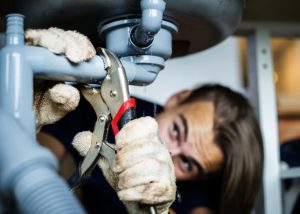Just how to Examine If Your House Has a Covert Leak
Just how to Examine If Your House Has a Covert Leak
Blog Article
Each person has their personal assumption on the subject of Locating water leaks.

Early discovery of dripping water lines can mitigate a potential disaster. Some small water leakages may not be visible.
1. Check Out the Water Meter
Checking it is a proven method that aids you discover leakages. If it moves, that indicates a fast-moving leakage. This indicates you may have a sluggish leakage that might also be underground.
2. Examine Water Usage
Assess your water expenses and also track your water usage. As the one paying it, you ought to see if there are any kind of discrepancies. If you identify sudden changes, despite your usage coinciding, it indicates that you have leaks in your plumbing system. Remember, your water expense should drop under the very same array every month. An abrupt spike in your bill suggests a fast-moving leak.
At the same time, a steady rise monthly, despite the exact same practices, reveals you have a slow leakage that's also slowly intensifying. Call a plumber to extensively inspect your residential property, particularly if you feel a warm area on your floor with piping underneath.
3. Do a Food Coloring Test
30% comes from bathrooms when it comes to water consumption. Test to see if they are running correctly. Drop specks of food color in the storage tank as well as wait 10 mins. There's a leakage between the storage tank as well as bowl if the color somehow infiltrates your bowl during that time without flushing.
4. Asses Outside Lines
Do not fail to remember to inspect your exterior water lines as well. Must water permeate out of the link, you have a loose rubber gasket. One small leak can throw away tons of water and also increase your water expense.
5. Check as well as Assess the Situation
Property owners need to make it a practice to examine under the sink counters as well as also inside closets for any bad odor or mold and mildew development. These 2 warnings suggest a leak so prompt attention is needed. Doing regular evaluations, even bi-annually, can conserve you from a significant problem.
Extra significantly, if you understand your house is already old, keep a watchful eye on your heating units, pipes, pipelines etc. Check for discolorations and weakening as the majority of devices and also pipes have a life expectancy. They will certainly also normally wear away because of wear and tear. Do not wait for it to intensify if you presume leaking water lines in your plumbing system. Call an expert plumber right away so you do not end up with a dreadful mess in your home.
Early detection of leaking water lines can alleviate a possible disaster. Some tiny water leakages may not be noticeable. Inspecting it is a surefire way that aids you discover leaks. One tiny leakage can lose tons of water and increase your water expense.
If you think dripping water lines in your plumbing system, do not wait for it to rise.
WARNING SIGNS OF WATER LEAKAGE BEHIND THE WALL
PERSISTENT MUSTY ODORS
As water slowly drips from a leaky pipe inside the wall, flooring and sheetrock stay damp and develop an odor similar to wet cardboard. It generates a musty smell that can help you find hidden leaks.
MOLD IN UNUSUAL AREAS
Mold usually grows in wet areas like kitchens, baths and laundry rooms. If you spot the stuff on walls or baseboards in other rooms of the house, it’s a good indicator of undetected water leaks.
STAINS THAT GROW
When mold thrives around a leaky pipe, it sometimes takes hold on the inside surface of the affected wall. A growing stain on otherwise clean sheetrock is often your sign of a hidden plumbing problem.
PEELING OR BUBBLING WALLPAPER / PAINT
This clue is easy to miss in rooms that don’t get much use. When you see wallpaper separating along seams or paint bubbling or flaking off the wall, blame sheetrock that stays wet because of an undetected leak.
BUCKLED CEILINGS AND STAINED FLOORS
If ceilings or floors in bathrooms, kitchens or laundry areas develop structural problems, don’t rule out constant damp inside the walls. Wet sheetrock can affect adjacent framing, flooring and ceilings.
https://www.servicemasterbyzaba.com/blog/how-to-detect-water-leakage-in-walls/

As a passionate person who reads about Hacks to detect leaks, I think sharing that piece of content was a great idea. Do you know someone else who is in to the topic? Why not share it. Many thanks for your time. Don't hesitate to pay a visit to our site back soon.
Report this page